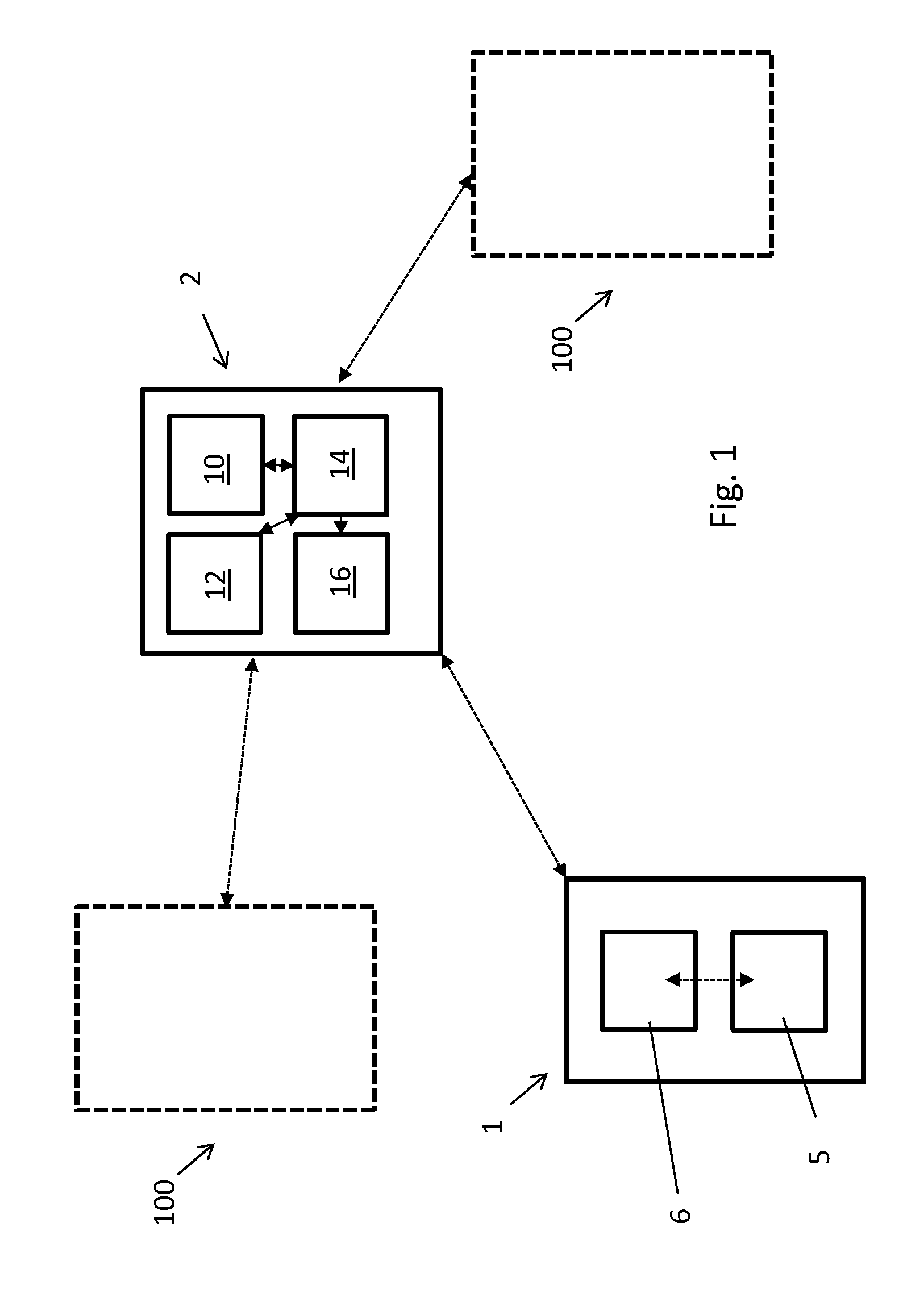Method of providing positioning data to mobile device
a mobile device and positioning data technology, applied in the direction of location information based service, etc., can solve the problems of increasing power consumption of mobile user devices and using out of date data
- Summary
- Abstract
- Description
- Claims
- Application Information
AI Technical Summary
Benefits of technology
Problems solved by technology
Method used
Image
Examples
example 1
[0208]As discussed above with reference to FIG. 3, customised user data relating to the user of the device may comprise a plurality of locations previously visited by the user, each of the said plurality of locations being associated with a frequency count indicative of a number of times the said locations have been visited by the user, and each of the said locations may also be associated with one or more activity categories or categories of place. In this example, one or more of the locations in the customised user data is associated with a “restaurant” category. The user posts a message on a social networking website indicating that she is planning to visit a restaurant in the next few hours. This message is picked up by the aggregator module 21 and the parameter generation module 26 generates one or more parameters indicating that a possible future activity category of the user is “visiting a restaurant” and / or that a possible future category of place to be visited by the user i...
example 2
[0212]In this example, the customised user data 12 includes one or more parameters indicative of a geographical region which the user is visiting for a limited time. For example, the user may have manually input to the mobile user device 1 that she is going on vacation to a particular city or country, or that she is attending an event at a particular venue. Additionally or alternatively, this information may be inferred by the aggregator module 21 and parameter generation module 26 from one or more messages posted by the user on a social network or from internet browsing data of the user or from one or more patterns of movement of the device 1. In this case, the selection module 14 selects one or more subsets of positioning data relating to the said city, country or venue (e.g. positioning data relating to the top attractions of a city, or positioning data relating to the venue or surrounding area, or positioning data along a route between a current position of the device 1 and the ...
example 3
[0213]In this example, the customised user data 12 comprises data concerning a transportation related activity pattern. More specifically, the customised data comprises the keywords “railway, commuter, Edinburgh, Glasgow” indicating that the user commutes between Edinburgh and Glasgow by train. The customised data may also comprise time reference information indicating that the user commutes by train between Edinburgh and Glasgow at times between 7 am and 9 am Monday to Friday. In this case, the selection module 14 selects positioning data from the server database 10 geo-referenced to one or more discrete geographical regions surrounding Edinburgh train station, one or more discrete geographical regions surrounding Glasgow train station and one or more geographical regions between Edinburgh train station and Glasgow train station. The selection module 14 may be further programmed to select positioning data geo-referenced to geographical locations or regions between a “home” location...
PUM
 Login to View More
Login to View More Abstract
Description
Claims
Application Information
 Login to View More
Login to View More - R&D
- Intellectual Property
- Life Sciences
- Materials
- Tech Scout
- Unparalleled Data Quality
- Higher Quality Content
- 60% Fewer Hallucinations
Browse by: Latest US Patents, China's latest patents, Technical Efficacy Thesaurus, Application Domain, Technology Topic, Popular Technical Reports.
© 2025 PatSnap. All rights reserved.Legal|Privacy policy|Modern Slavery Act Transparency Statement|Sitemap|About US| Contact US: help@patsnap.com



